Monday, 31 May 2021
Our Lady of Walsingham
Sunday, 30 May 2021
A First Mass in New Orleans
Our Lady on the Red Mount King’s Lynn
Saturday, 29 May 2021
Celebrating Oak Apple Day
Our Lady of the Oak at St Martin’s in Norwich
Friday, 28 May 2021
Our Lady ‘of Ardenburgh’ at Great Yarmouth
Our Lady of Winfarthing
Our Lady of Caversham
Wednesday, 26 May 2021
Our Lady of Windsor
Tuesday, 25 May 2021
Our Lady of Winchester
Three Medieval Statues of Our Lady
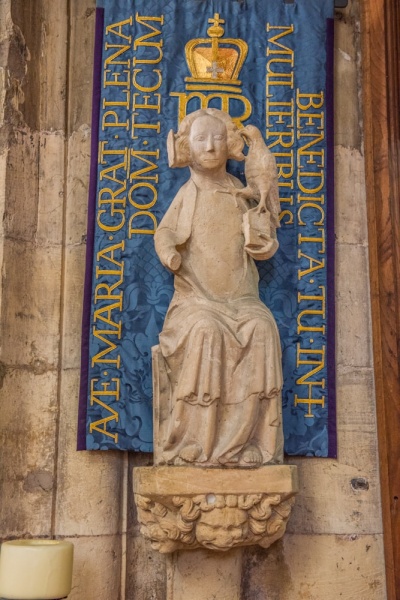
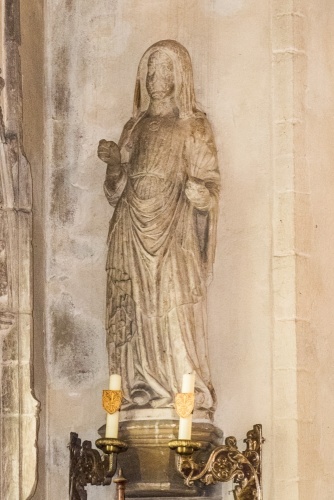
Monday, 24 May 2021
1471 - the survivors
Tying up loose endsThe campaign recounted by the ‘Arrivall’ lasted 83 dramatic days. At the end of the narrative there were unfinished stories. The lives of King Edward IV and Richard Duke of Gloucester, later King Richard III, are well documented, but others aren’t. These few sentences are to tie up some of the loose ends. These are in no particular order. Thomas Neville, the Bastard of Fauconberg, seems not to have kept to the terms of his pardon. Details are unclear, but in September 1471 a misdemeanour in the north of England led to his execution. His head was brought back to London, to be displayed on London Bridge, the scene of his recent besieging. It was ordered that he was displayed ‘looking to Kentward’ Jasper Tudor was hunted down in Pembroke, but accompanied by his young nephew Henry he escaped from Tenby by ship. He was blown ashore in Brittany where he and Henry were placed under a loose arrest. In 1485, the pair returned, landing at Milford and fought for the throne at Bosworth. Henry was crowned king. Jasper spent his remaining years in quiet comfort, dying in December 1495. John de Vere, Earl of Oxford, a committed Lancastrian, who was a commander in Warwick’s army which was defeated at Barnet fled to France after the battle. He returned two years later and was besieged on St Michael’s Mount in Cornwall. Captured and imprisoned he escaped, fled to France again and returned with Henry Tudor. After the victory at Bosworth, he fought Henry VII’s rebels for him, including last, the repression of the Cornish rebels at Blackheath in 1497. In 1475, King Edward invaded France with an army of 11,000 men. He had planned on support from the Dukes of Burgundy, Brittany and St Pol but was betrayed and let down badly by all three. His only option was peace, and one of the outcomes of the Treaty of Picquigny was that Queen Margaret was ransomed to King Louis for 50,000 crowns and returned to France. To discharge her debt she was forced to sign over her inheritance. When her father died, Louis evicted her and claimed her father’s lands. She died penniless on 25 August1482 and is buried in Angers Cathedral. King Henry’s burial in Chertsey made it a place of pilgrimage, as was Prince Edward’s at Tewkesbury. This annoyed King Edward, who banned the practice. In 1484, King Richard had King Henry reinterred in St George’s Chapel, Windsor. Henry VII made attempts to have him beatified and moved again, to Westminster Abbey but this came to naught and he remains at Windsor. George, Duke of Clarence continued to be false and fleeting, and a thorn in his brother’s side. From confessions obtained from one of his retainers by torture he was tried for treason and executed, allegedly by drowning in a butt of malmsey wine. Charles, Duke of Burgundy was impetuous to the end. He made more enemies than he could handle, and started a very brutal campaign against the Duke of Lorraine and the Swiss. Completely out-manoeuvred, he was killed at the battle of Nancy, fought in freezing conditions on 5 January 1477. Louis XI died in 1483, having overseen the fall of France’s many independent feudal Lords, and the creation of a strong nation. His unconventional methods and unusual personality hadn’t made him friends, though. John Paston, wounded at Barnet and pardoned went home to Norfolk and fought through the courts, with his family, for what he believed was his. Once the claims of the Dukes of Norfolk and Suffolk had been defeated he settled down to the life of a squire. By good fortune, his Lancastrian leanings meant that he didn’t fight at Bosworth and his family flourished as country gentlemen and courtiers under the Tudors. Sir Henry Vernon seems to have had a charmed life. Ignoring numerous calls to arms, he was forgiven by King Edward and became an Esquire to the Body to Edward and then King Richard. Avoiding Bosworth, he transitioned to the Tudors, becoming the Controller of the household of the new king's heir, Prince Arthur. He died quietly of old age. |
Out Lady in the Wall at Boston
Our Lady of Lincoln
Our Lady in the Wood near Epworth
Sunday, 23 May 2021
May Procession at SS Gregory and Augustine Oxford
Our Lady of the Park at Liskeard
Our Lady of All Hallows Barking by the Tower
More on the rural London shrines of Our Lady
In 1502, Queen Elizabeth, the wife of Henry VII, ranked the shrine as equal in status to Our Lady of the Pew at Westminster. A year later the pregnant Queen sought the protection of Our Lady of Willesden, paying a pilgrim to visit the image on her behalf. Alas, her prayers were to be unanswered, Elizabeth dying in childbirth a few days after.
The statue attracted offerings and bequests. In 1517, William Litchfield, vicar of Willesden and chancellor of St Paul’s Cathedral, was buried before it, leaving his parish a silver chalice to be used in honour of the Blessed Virgin forever.
Other pilgrims to the shrine included Thomas More, who paid homage to the image a few weeks before his arrest in 1534. Some years before this visit, More had written of his concern that the eight-mile excursion from London to Willesden provided pilgrims with an opportunity to loosen their morals. The shrine was especially popular among the wives of the London citizenry. He cautioned "you men of London" to accompany their womenfolk to Willesden "or keep them at home with you! Else you be sorry."
Catholic martyr and saint, More was entirely orthodox in his religious outlook and believed in the spiritual value of religious imagery and pilgrimages. His comments here reflect his embrace of humanist (in the Renaissance sense) scholarship and a somewhat snooty attitude towards popular religion, especially if it involved anything resembling fun.
But the shrine also attracted the ire of reformers with more malign intent. A fire at Willesden church in 1509 prompted Elizabeth Sampson, a London Lollard, to denounce the image of the Virgin in fruity terms as a "burnt arse elf and a burnt arse stock, and if she might have helpen men and women which go to her on pilgrimage, she would not have suffered her tail to have been burnt".
In this context, ‘burnt’ refers to the symptoms of a sexually transmitted infection. Sampson was effectively comparing the Virgin of Willesden to a disease-ridden whore. Her comments led to a trial before an ecclesiastical court; given the severity of penalties for religious dissent at this time, she was lucky to escape with a penitential pilgrimage to the image she’d ridiculed.
Willesden’s statue of the Virgin was targeted for destruction during the Reformation. In 1538, together with similar images from Ipswich, Walsingham and Worcester, it was reduced to cinders on a bonfire in Chelsea.
Even then, Our Lady of Willesden still had devout followers. These included the Suffolk priest Sir Robert Creukehorne. He claimed that the Virgin had appeared to him in a vision, instructing him to preach that she should be venerated ‘at Willesden as she hath been in olden times’.
1471 - Burying King Henry VI
May 23rd 1471: A last trip to Chertsey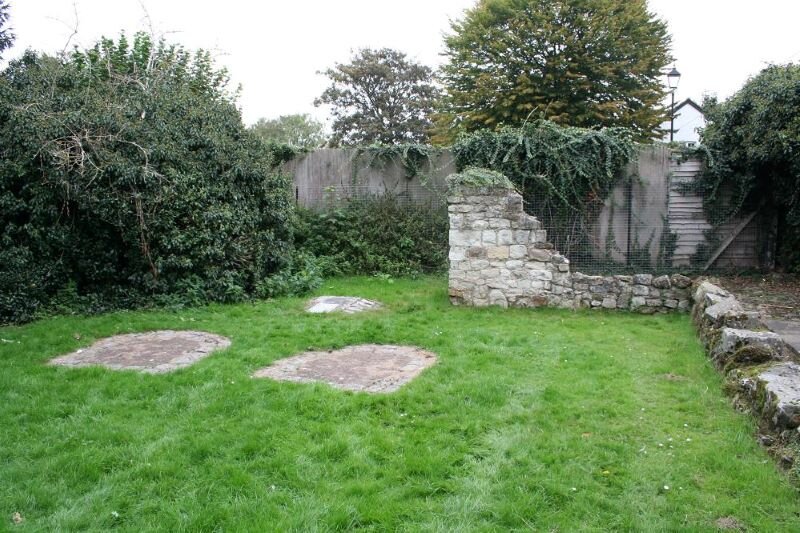 All that remains of Chertsey Abbey King Henry lay in St Paul’s Cathedral whilst arrangements were made for his burial, and this was done with the proper solemnity accorded to his rank. His burial was at Chertsey Abbey, which was then one of the most important religious houses in the country, founded in 666AD Sforza da Bettini, who diligently reported English and French affairs to the Duke of Milan, gave a sympathetic report to his master: The body was exhibited for days in St. Paul's church in London, and was carried thence by the river Thames to the conventual church of the monks at Chertsey, in the diocese of Winchester, fifteen miles from the city; a kind of barge having been solemnly prepared for the purpose, provided with lighted torches. How great his deserts were, by reason of his innocence of life, his love of God and of the Church, his patience in adversity, and his other remarkable virtues, is abundantly testified by the miracles which God has wrought in favour of those who have, with devout hearts, implored his intercession. The Exchequer of Receipt issue Rolls record the cost of the funeral, managed by Hugh Brice: To Hugh Brice in money delivered to him for money paid by him for wax cloth, linen, spices and other ordinary expenses promised and incurred by him in connection with the funeral of Henry of Windsor who died in the tower of London, and for the wages and rewards of various men carrying torches from the tower to the cathedral church of Saint Pauls, London, and then to Chertsey with the body: £15 3s 6 1/2d This very public burial marked the end of the Lancastrian era in England and Wales. The King and his heir were both dead. Edward IV was now indisputably the King. The campaign was over. |
Saturday, 22 May 2021
1471 - Pacifying Kent
May 22nd 1471: Dealing with Kent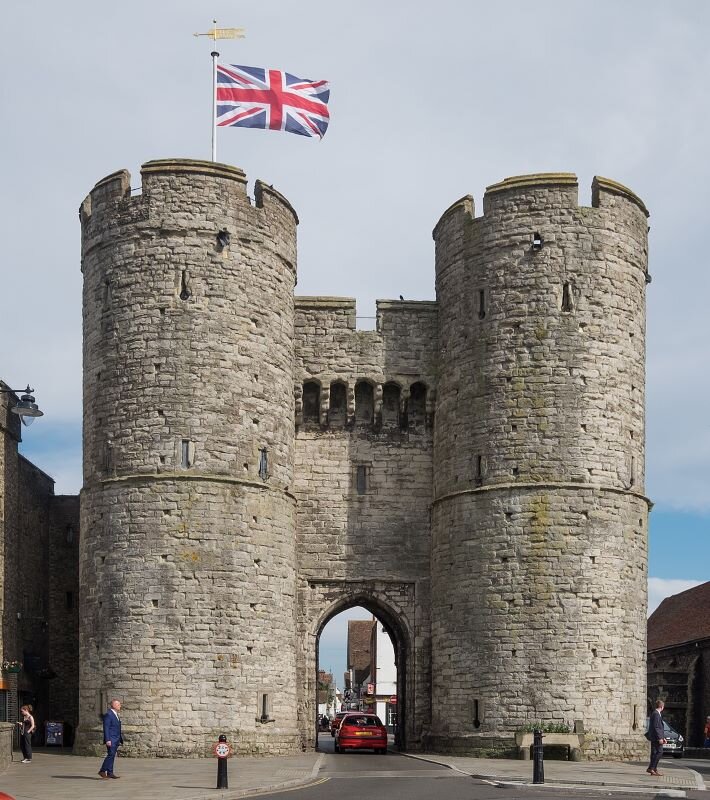 Westgate, Canterbury. King Edward did not rest on his laurels. As soon as his urgent business in London was done he was off on the road again with his brother Richard and his whole army, to deal with the Kentish rebels. Richard, Duke of Gloucester, went to Sandwich to accept the, probably pre-negotiated, surrender. There he found The Bastard of Fauconberg with a company of soldiers and the ships which hadn’t crossed the channel to Calais. There was no trouble, though. The ‘Arrivall’ has it that; ‘as soon as they understood the King and his host approached near unto them, the said bastard sent unto him such means as best he could humbly to sue for his grace and pardon, and them of his fellowship, and, by appointment, willed there to be delivered to the King’s behove all his ships, and became his true liegemen, with as straight promise of true allegiance as could be devised for them to be made, which, after deliberation taken in that part, for certain great considerations, was granted.’ The King, though, had stopped in Canterbury, where he held an inquiry. Retribution was harsh and punishment swift. Quyntyn and Spysyng, the captains involved in storming London, were among the executed. Their heads were displayed on the Aldgate in London. Nicholas Faunt, the Mayor, was taken to London to be beheaded. John Thornton, the Town Sergeant was among those accused. It was said that he ‘Falsely and traitorously received the King’s wages to have gone with him to Tewkesbury and went not unto him, but that he with the same wages falsely and traitorously personally assisted the same Fauconberg in the said riot and insurrection’. His punishment isn’t known. Edward took the Cinque Ports and Canterbury into his direct rule, appointing lieutenants to govern them. The inquiries into the wrongdoings of Kent went on well into the summer. The resultant fines and confiscations swelled the royal coffers. The Great Chronicle of London observed that ‘such as were rich were hanged by the purse and the other that were needy were hanged by the necks, by means whereof the King’s coffers somedeal increased’. |
Our Lady of Aylesford
Our Lady of Poulton
Pilgrim badge from the shrine of Our Lady of Poulton in Kent. The badge depicts the Virgin Mary sitting on a throne with the infant Christ on her right. They are both wearing tall crowns. At Mary’s feet is a rebus with the word ‘pul’ in black letter followed by a cask or tun, meaning ‘Poulton’.
The shrine of Our Lady of Poulton seems to have had a brief period of popularity, probably because it was close to Canterbury where so many pilgrims went to the shrine of St Thomas Becket. By the 16th century, the shrine’s fame had declined and was only of interest to people from the local area.
Our Lady of Pity in the Rock at Dover
Dominican Ordination in Washington DC
Friday, 21 May 2021
King Henry VI - a royal failure?, a royal martyr?
After a relatively successful minority, though seriously marred by clashes such as that in 1425 between the King’s great-uncle Bishop

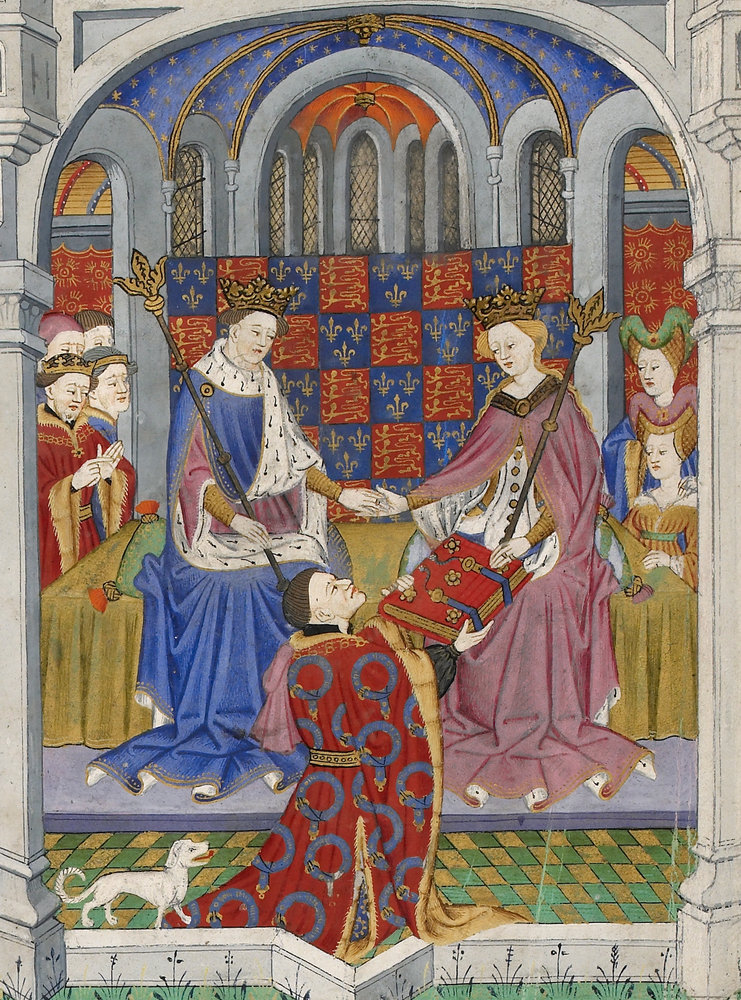
Image: Historic Roysl Palaces
sows the two patron Saints of the dual monarchy he inherited, SS Denis and George, the Great East Anglian martyr King St Edmund and King Henry VI side by side on the screen.
Lord Jesus Christ,
who created,
redeemed, and preordained
me to be this that I am,
you know what you wish to do with me;
do with me in accordance
with your will,
with mercy.
Amen.


